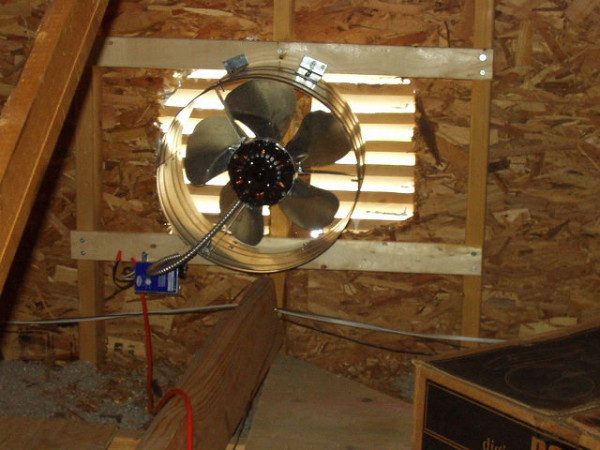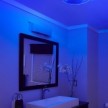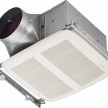Attic Ventilation Fans
 Photo source: greendcdaily.com
Photo source: greendcdaily.com
Are Attic Fans worth installing?
I’m not a big fan of attic ventilation fans. Attic ventilation fans are usually mounted in the upper slope of the roof and are designed to cool the attic, save energy on cooling costs and extend the life of the roof shingles. These thermostatically controlled bfans push out the “upper” attic hot air and drawing in cooler outside air, usually through the lower soffit vents.
The unmentioned evil of attic ventilation fans is that they often pull interior, air-conditioned air up from the home into the attic through small cracks in the ceiling. [wires, pipes and other air leak penetrations] Once this happens negative pressure that is created in the house pulls hot outside air into the house, causing the air conditioner to work longer.
I’ve also heard that attic ventilation fans can cause back draft issues with gas appliances [e.g. water heater] which can cause health and safety problems. The fan basically causes make-up air to come down the flues rather than from the passive attic vents. This often results in a water heater or boiler not venting flue gasses properly, and the fumes actually being vented to the inside of the house. I’d consult your plumber or appliance HVAC technician on this one.
Because of the “negative pressure” inside the house that attic ventilation fans create, I don’t feel that they save you money on electricity or cooling costs.
Let’s assume that you have a super tight house and no leakage, there are solar powered fans on the market that draw no electricity. Solar attic ventilation fans cost you nothing to operate, but you still have the negative pressure issue. Additionally, the cost to purchase and install one will take you a decade or more to recover the energy savings. I would only consider a solar powered fan if you were going to be re-roofing and already had a reason to be on the roof.
If you’re not re-roofing and have gas appliances, susceptible to a back draft, my advice is to allow passive ventilation to do its job through natural convection [upward flow of heat through soffit, eve and ridge venting.









